 When it comes to irrigation, no two properties are the same, especially when slopes come into play. Sloped landscapes present unique challenges, from runoff to inconsistent water distribution. That’s why choosing the right watering technique for your sloped landscape is essential for maintaining healthy grass, plants, and soil integrity. In this blog, we’ll break down efficient watering techniques for sloped landscapes to help you determine which method best suits your property’s needs.
When it comes to irrigation, no two properties are the same, especially when slopes come into play. Sloped landscapes present unique challenges, from runoff to inconsistent water distribution. That’s why choosing the right watering technique for your sloped landscape is essential for maintaining healthy grass, plants, and soil integrity. In this blog, we’ll break down efficient watering techniques for sloped landscapes to help you determine which method best suits your property’s needs.
Why Slopes Need a Different Approach
When you’re working with a sloped landscape, gravity works against you. Water tends to flow downhill before it has time to absorb, which can lead to:
- Runoff and Erosion: Water can carry away topsoil and nutrients, damaging plants and weakening your landscape.
- Uneven Watering: Upper sections stay dry while lower areas may flood, stressing your plants and wasting resources.
- Shallow Root Systems: Fast-moving water doesn’t soak in deeply, which prevents strong root growth and long-term plant health.
To avoid these issues, it’s important to use watering techniques that allow water to soak in gradually and stay where your plants need it most.
The Best Watering Techniques for Sloped Landscapes
Not all irrigation methods work well on slopes. These are the most effective systems for keeping sloped properties healthy and hydrated:
Cycle and Soak
This method breaks watering into short, repeated cycles with rest periods in between. It allows water time to absorb into the soil before the next cycle begins, helping to reduce runoff and prevent erosion on steep grades.
Drip Irrigation
Drip systems apply water directly to the base of plants, drop by drop. This method works especially well in planting beds along slopes and keeps water from pooling or running off. It’s also highly efficient and easy to customize for different plant zones.
Rotary Nozzles and Sprinklers
Rotary sprinklers deliver water at a slower, more controlled rate than traditional spray heads. This reduces runoff and ensures that more water reaches the soil. They’re a solid choice for moderate slopes that need broad coverage.
Make Your System Work for Your Landscape
Choosing the right watering techniques for sloped landscapes depends on a range of factors, from soil type and sun exposure to plant variety and slope steepness. The right system will deliver water where it’s needed while reducing waste, erosion, and long-term damage. But irrigation alone isn’t always the full solution. In many cases, proper grading, retaining walls, or hardscape features are necessary to manage water flow and prevent long-term erosion.
At Dolan Landscaping, we design and install irrigation systems that are tailored to your property. Whether you need a full system for a steep incline or a drip setup for garden beds paired with hardscaping and retaining walls, we’ll help you find the right solution for your outdoor space. Call our team at (508) 799-4556 or contact us here for more information.
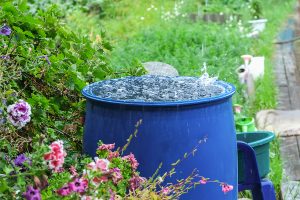 As sustainable landscaping grows in popularity, more homeowners are turning to rainwater collection systems to conserve water and reduce utility costs. These systems capture runoff—usually from rooftops—and store it for later use in irrigating lawns, gardens, and other applications. From basic rain barrels to more advanced underground tanks, rainwater harvesting offers an eco-friendly way to support your landscape. But like any investment, it comes with both benefits and challenges. Here’s what to consider before installing one on your property.
As sustainable landscaping grows in popularity, more homeowners are turning to rainwater collection systems to conserve water and reduce utility costs. These systems capture runoff—usually from rooftops—and store it for later use in irrigating lawns, gardens, and other applications. From basic rain barrels to more advanced underground tanks, rainwater harvesting offers an eco-friendly way to support your landscape. But like any investment, it comes with both benefits and challenges. Here’s what to consider before installing one on your property.  Have you ever noticed how a single weed can take over your garden if left unnoticed? That same principle applies to your landscape—what starts as a minor issue can quickly escalate into an inconvenient problem, requiring lots of maintenance. Regular landscape inspections can help you catch problems early, ensuring your landscape stays beautiful and healthy all year round. In this blog, we’ll go over why regular landscape inspections are crucial and how they can help your landscape flourish.
Have you ever noticed how a single weed can take over your garden if left unnoticed? That same principle applies to your landscape—what starts as a minor issue can quickly escalate into an inconvenient problem, requiring lots of maintenance. Regular landscape inspections can help you catch problems early, ensuring your landscape stays beautiful and healthy all year round. In this blog, we’ll go over why regular landscape inspections are crucial and how they can help your landscape flourish.  Spring is just around the corner; before we know it, all the snow will be melted, and it’ll be time to start tending to the gardens. Take a look around your yard: what are you growing this year? When you head to the nursery, your plant purchasing options come down to two primary categories: annuals or perennials. Today, we’re going to share the things
Spring is just around the corner; before we know it, all the snow will be melted, and it’ll be time to start tending to the gardens. Take a look around your yard: what are you growing this year? When you head to the nursery, your plant purchasing options come down to two primary categories: annuals or perennials. Today, we’re going to share the things 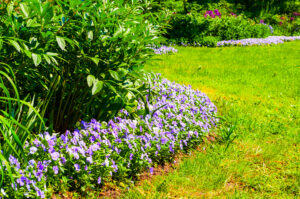 If you’re looking to lead an eco-friendlier lifestyle, your landscape is a good place to start. A sustainable landscape – one that takes advantage of native plants and erosion control – not only lowers your carbon footprint but contributes some stunning aesthetic to your property. Let’s review how you can build a sustainable landscape and contribute to the fight against climate change.
If you’re looking to lead an eco-friendlier lifestyle, your landscape is a good place to start. A sustainable landscape – one that takes advantage of native plants and erosion control – not only lowers your carbon footprint but contributes some stunning aesthetic to your property. Let’s review how you can build a sustainable landscape and contribute to the fight against climate change. 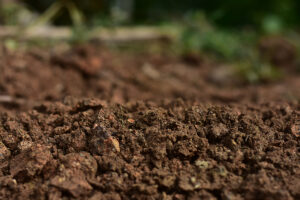 If you read
If you read 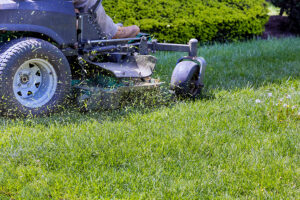 While we’re still fighting to get through February, spring is less than a month away, which means we’ll soon need to set aside time for our garden tasks. One task, in particular, you may be looking forward to or dreading is mowing your lawn, but in order to ensure your winter landscape recovery goes according to plan, you have to be careful about when you give your lawn its first clip of the year. Let’s discuss the most appropriate time to begin mowing your lawn.
While we’re still fighting to get through February, spring is less than a month away, which means we’ll soon need to set aside time for our garden tasks. One task, in particular, you may be looking forward to or dreading is mowing your lawn, but in order to ensure your winter landscape recovery goes according to plan, you have to be careful about when you give your lawn its first clip of the year. Let’s discuss the most appropriate time to begin mowing your lawn. 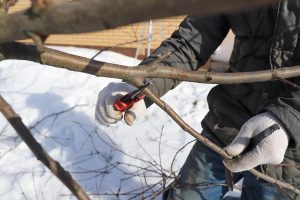 Although every tree has its own set of requirements for optimal growth, most benefit from proactive tree care in winter. During their dormancy in the cold-weather months, pruning can be used to ensure trees experience active growth come springtime. Removing dead or unhealthy branches and encroaching limbs can pave the way for more lively greenery or increase your fruit harvest. However, you must go about maintenance in the right way to achieve success. Let’s review some tips for pruning trees in winter.
Although every tree has its own set of requirements for optimal growth, most benefit from proactive tree care in winter. During their dormancy in the cold-weather months, pruning can be used to ensure trees experience active growth come springtime. Removing dead or unhealthy branches and encroaching limbs can pave the way for more lively greenery or increase your fruit harvest. However, you must go about maintenance in the right way to achieve success. Let’s review some tips for pruning trees in winter.  Not only can exposed tree roots cut into the aesthetic of your landscape, but they can also be a nightmare for lawnmower blades and hardscapes. Since cutting or pruning these roots can injure or kill the tree, it can be frustrating to find a solution that works best for your property. Fortunately, you have a few options at your disposal. Let’s take a look at some of the ways you can fix exposed tree roots.
Not only can exposed tree roots cut into the aesthetic of your landscape, but they can also be a nightmare for lawnmower blades and hardscapes. Since cutting or pruning these roots can injure or kill the tree, it can be frustrating to find a solution that works best for your property. Fortunately, you have a few options at your disposal. Let’s take a look at some of the ways you can fix exposed tree roots. 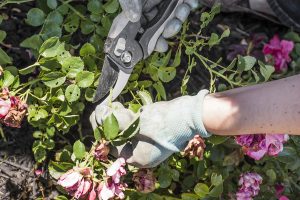 Are you struggling to keep your plants alive? Can’t figure out what you’re doing wrong? The solution may be as simple as trying a new technique, like deadheading. Properly deadheading your plants and flowers could help your garden flourish. Check out the rest of this blog to see how deadheading can work for you and your garden.
Are you struggling to keep your plants alive? Can’t figure out what you’re doing wrong? The solution may be as simple as trying a new technique, like deadheading. Properly deadheading your plants and flowers could help your garden flourish. Check out the rest of this blog to see how deadheading can work for you and your garden.